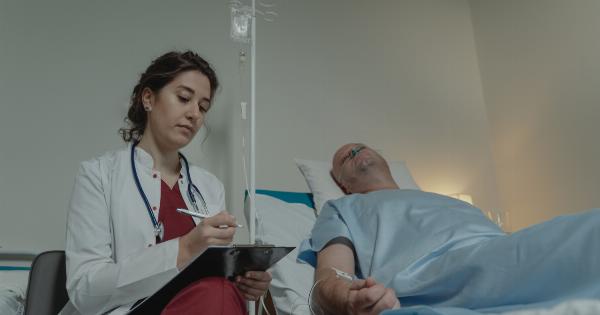Cancer is a leading cause of death worldwide. There are many different types of cancer, each with its unique challenges and symptoms. Some cancers are more dangerous than others, with higher mortality rates and more aggressive treatment options.
In this article, we will discuss the most dangerous types of cancer.
Lung Cancer
Lung cancer is one of the deadliest forms of cancer, with a five-year survival rate of only 19%. It is the leading cause of cancer death for both men and women. Symptoms of lung cancer include persistent coughing, chest pain, and shortness of breath.
Risk factors for lung cancer include smoking, exposure to secondhand smoke, and exposure to radon gas.
Colon and Rectal Cancer
Colon and rectal cancer, also known as colorectal cancer, is the second-leading cause of cancer death in the United States. Symptoms include abdominal pain, rectal bleeding, and changes in bowel habits.
Risk factors for colon and rectal cancer include age, family history, and a diet high in processed foods and red meat.
Pancreatic Cancer
Pancreatic cancer has a five-year survival rate of only 9%, making it one of the most dangerous forms of cancer. Symptoms of pancreatic cancer can include abdominal pain, weight loss, and yellowing of the skin and eyes.
Risk factors for pancreatic cancer include smoking, a family history of the disease, and obesity.
Liver Cancer
Liver cancer is another dangerous form of cancer, with a five-year survival rate of only 18%. Symptoms of liver cancer can include abdominal pain, jaundice, and weight loss.
Risk factors for liver cancer include chronic hepatitis B or C infections, alcohol abuse, and obesity.
Breast Cancer
Breast cancer is the most common cancer in women, but it can also affect men. Symptoms of breast cancer can include a lump or thickening in the breast, nipple discharge, and changes in breast size or shape.
Risk factors for breast cancer include age, family history, and a history of radiation therapy.
Prostate Cancer
Prostate cancer affects the prostate gland in men and is one of the most common types of cancer. Symptoms of prostate cancer can include difficulty urinating, blood in the urine, and sexual dysfunction.
Risk factors for prostate cancer include age, family history, and a diet high in fat.
Bladder Cancer
Bladder cancer is a type of cancer that affects the bladder, the organ that holds urine. Symptoms of bladder cancer can include blood in the urine, pain or burning during urination, and frequent urination.
Risk factors for bladder cancer include smoking, exposure to certain chemicals, and a diet high in processed foods and red meat.
Ovarian Cancer
Ovarian cancer is a type of cancer that affects the ovaries, the organs that produce eggs in women. Symptoms of ovarian cancer can include abdominal pain, bloating, and changes in bowel habits.
Risk factors for ovarian cancer include age, family history, and a history of infertility.
Brain and Spinal Cord Cancer
Brain and spinal cord cancer is a type of cancer that affects the nervous system. Symptoms of brain and spinal cord cancer can include headache, nausea, and weakness or numbness in the limbs.
Risk factors for brain and spinal cord cancer include exposure to radiation and a family history of the disease.
Leukemia
Leukemia is a type of cancer that affects the blood and bone marrow. Symptoms of leukemia can include fatigue, fever, and easy bruising or bleeding.
Risk factors for leukemia include exposure to chemicals, radiation therapy, and a family history of the disease.
Conclusion
While there are many different types of cancer, some are more dangerous than others. Lung, colon and rectal, pancreatic, liver, breast, prostate, bladder, ovarian, brain and spinal cord, and leukemia are among the most dangerous types of cancer.
If you experience any symptoms of cancer, it is important to see your doctor right away.



























